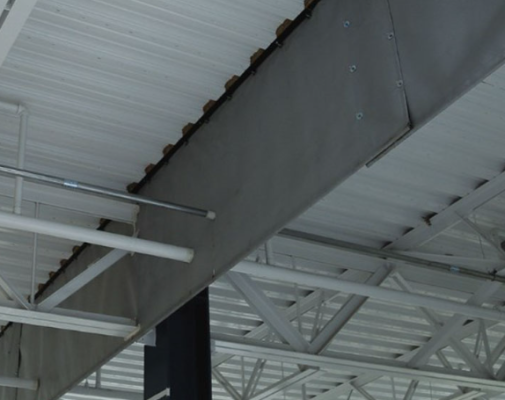What is a Smoke Curtain? Construction Methods, Materials, and Working Principle
Introduction to Smoke Barriers

Guangdun Smoke Barriers are designed to contain and prevent the spread of smoke in the event of a fire, helping to protect building occupants and improve fire safety. These barriers effectively compartmentalize spaces to reduce smoke damage and ensure safe evacuation routes.
Key Features:
Smoke Containment: Prevents smoke from spreading to other areas, improving safety during emergencies.
Durable Construction: Made from high-quality materials to withstand extreme conditions.
Easy Deployment: Designed for quick installation and simple operation during emergencies.
Fire Resistance: Offers additional protection against the spread of fire.
Compliance: Meets fire safety standards and building regulations for smoke control.
Guangdun Smoke Barriers play a critical role in maintaining safe evacuation paths and reducing fire-related damage in commercial and industrial buildings.
A smoke barrier is an essential device used in underground and large-space smoke extraction systems of high-rise civilian buildings. It serves to separate smoke zones. When a fire alarm is triggered or a smoke detector sends a signal, the soft smoke barrier located above the ceiling quickly descends to a predetermined height, creating a distinct smoke zone. This allows smoke extraction fans to expel high-temperature smoke outdoors, providing a safe environment for occupants to evacuate and gaining valuable time for rescue operations.
Types of Smoke Barriers
Fixed Smoke Barriers: These are constructed from various fire-resistant materials and are permanently installed below the ceiling or beams. The height of fixed smoke barriers typically ranges from 500mm to 800mm.
Electric Smoke Barriers: These barriers are made from 0.8 to 1.2mm ordinary carbon steel (or stainless steel) and feature the latest materials for the curtain, meeting the British BSD476 standard. The burning performance reaches GB8624 standard Class B1, with fatigue resistance (up and down) exceeding 2000 cycles. The transmission components are made of high-quality steel, and the casing is sealed.
Working Principle of Smoke Barriers
Smoke barriers can be installed as single or multiple units. The control mechanism is mounted on walls or columns. Upon detecting a fire, the control center sends a signal that activates the motor or actuator, causing the smoke barrier to deploy (it can also be controlled via a manual button or smoke sensor). This forms a smoke barrier 500mm to 800mm high, with each unit gradually retracting to its original position after the alarm is cleared. Automatic control of the deployment and retraction of related equipment can also be implemented.
Technical Parameters
The time for a unit to deploy or return to its original position should not exceed 6 seconds.
Motor specifications: Voltage AC 380V, current 1.1A, power ≤ 0.18kW.
Maximum unit length: ≤ 8 meters.
Standard barrier height: 500mm (commonly used) to 800mm.
Electrical wiring uses 600V heat-resistant resin wires or equivalent flame-retardant wires, with insulation resistance ≥ 50MΩ.
Conclusion
Smoke barriers play a vital role in enhancing building safety by preventing smoke spread and providing a safe escape route during fire incidents. As a reputable fire door manufacturer, we emphasize the importance of integrating high-quality fire doors with effective smoke barriers. Together, they create a comprehensive fire protection strategy that enhances safety in buildings.


